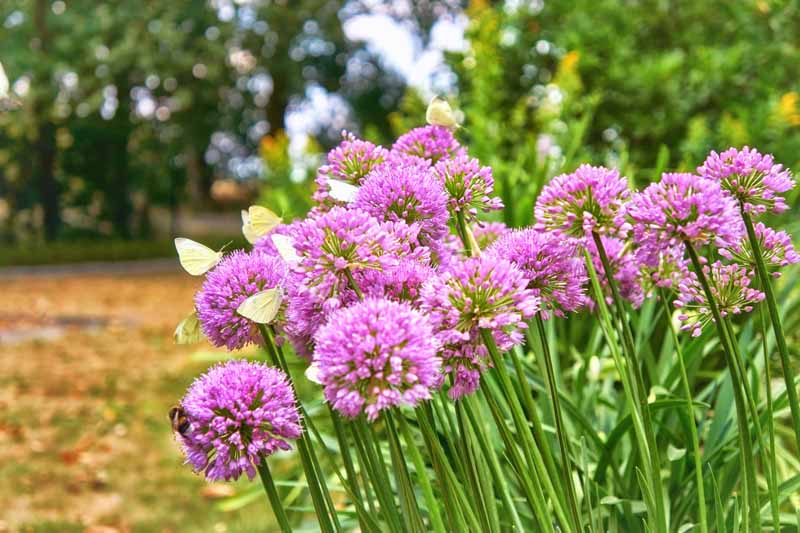Agapanthus Expanding Problems: Dirt, Sunshine, and Watering
Agapanthus Expanding Problems: Dirt, Sunshine, and Watering
Blog Article
Letting Loose the Secret to Effective Agapanthus Farming: Tips and Techniques for a Flourishing Garden
In the realm of gardening, growing agapanthus efficiently requires a tactical technique that includes different aspects of plant treatment. With mindful focus to information, one can open the tricks to supporting these sensational flowers, resulting in a garden that thrives with charm and vibrancy. By comprehending the nuances of agapanthus cultivation, one can create an environment where these plants thrive and flower perfectly. In the complying with discussion, we will explore essential suggestions and techniques that will direct you towards a prospering agapanthus yard, using insights into ideal techniques, soil conditions, sprinkling methods, and a lot more.
Growing Agapanthus: Finest Practices
When growing Agapanthus, appropriate soil preparation is necessary for making sure effective growth and growth of these lovely flowers. Agapanthus, commonly referred to as Lily of the Nile or African lily, flourishes in well-draining dirt with a slightly acidic to neutral pH degree - Agapanthus. Before growing, it is important to amend hefty clay dirts with organic matter such as compost or peat moss to enhance drainage and supply essential nutrients for the plants
To grow Agapanthus, pick a place that gets complete sunlight to partial color, as this will certainly promote healthy and balanced development and abundant blooming. Dig a hole twice the size of the plant's root sphere and position the Agapanthus at the exact same depth it was formerly expanding. Carefully backfill the opening with dirt, weighing down securely to remove any type of air pockets around the origins.
Water the newly planted Agapanthus extensively and continue to keep the soil equally wet, especially during the plant's energetic expanding period. Agapanthus. Applying a well balanced fertilizer once a month can additionally sustain the plant's development and flowering. By following these finest practices for planting Agapanthus, you can produce a spectacular screen of these exciting blossoms in your garden
Ideal Soil Issues for Agapanthus
For ideal development and growing success of Agapanthus plants, making certain the dirt problems are suitable is vital. Agapanthus likes soil that is abundant in nutrients, so including a well balanced plant food during the growing period can advertise healthy growth and dynamic blooms.

Watering and Fertilizing Tips
To make sure healthy and balanced growth and dynamic blossoms, correct watering and feeding techniques are important for successful Agapanthus farming. Agapanthus plants profit from routine watering, specifically throughout the expanding season.
When it comes to feeding Agapanthus, a well balanced fertilizer with equal components nitrogen, phosphorus, and potassium can be used in the springtime to advertise healthy and balanced growth and flowering. Slow-release plant foods are excellent for giving nutrients progressively over a prolonged period. Avoid over-fertilizing, as this can bring about extreme foliage development at the cost of flowers.
Additionally, integrating raw material like compost right into the soil can boost nutrient degrees and enhance soil framework, aiding in the total health and wellness of the Agapanthus plants. By following these watering and feeding pointers, gardeners can ensure their Agapanthus plants thrive and create spectacular display screens of flowers.
Trimming and Deadheading Techniques
Appropriate trimming and deadheading methods play an essential duty in maintaining the health and wellness and aesthetics of Agapanthus plants, complementing the vital techniques of watering and fertilizing for effective farming. Pruning Agapanthus entails eliminating invested blossom heads, yellowing or dead fallen leaves, and total shaping of the plant to promote far better development. Deadheading, the process of getting rid of faded flowers, not just enhances the plant's appearance however also encourages additional growing.
When deadheading Agapanthus, find more it is recommended to clip off the blossom stem at the base using sharp, clean shears. This process reroutes the plant's energy from seed production back into origin and vegetation growth, promoting a healthier and a lot view publisher site more robust plant. Normal deadheading can expand the blooming duration of Agapanthus and prevent self-seeding, which can result in overcrowding.
In terms of pruning, Agapanthus typically benefits from a light trim after flowering to clean up the plant and motivate fresh development. Reducing the invested blossom stems and getting rid of any kind of dead or damaged vegetation assists preserve the plant's vigor and overall appearance. Nonetheless, it is necessary to avoid cutting into the crown of the plant, as this can damage its wellness.

Protecting Agapanthus From Pests and Diseases
Applying efficient parasite and condition administration approaches is important to guarding the health and wellness and vigor of Agapanthus plants in cultivation. One usual insect that influences Agapanthus is the Agapanthus borer, a caterpillar that passages right into the plant, causing damages to the fallen leaves and flowers.
Along with bugs, Agapanthus are at risk to conditions such as root rot and fungal leaf places. These concerns can typically be protected against by guaranteeing appropriate water drainage and staying clear of overwatering. Influenced components of the plant should be quickly eliminated to stop more spread if signs of disease appear. Fungicides might also be used as a treatment procedure, complying with the supplier's instructions thoroughly. By remaining alert and attending to parasite and condition concerns without delay, gardeners can help their Agapanthus thrive and prosper.

Conclusion
In final thought, effective farming of agapanthus requires appropriate planting methods, perfect dirt problems, sufficient watering and fertilizing, routine trimming and deadheading, and defense from diseases and insects. By complying with these tips and techniques, garden enthusiasts can make sure a growing garden loaded with beautiful agapanthus flowers. Agapanthus. Remember to preserve consistent treatment and focus to information to promote the health and durability of these magnificent plants
When planting Agapanthus, appropriate dirt prep work is essential for making sure effective development and growth of these beautiful flowers.Water the newly planted Agapanthus completely and continue to keep the soil uniformly damp, particularly during the plant's active growing season.For ideal growth and blooming success of Agapanthus plants, guaranteeing the soil conditions are suitable is vital. When transplanting or planting Agapanthus, make sure the soil is well-prepared to provide the necessary foundation for the plants to develop themselves efficiently. One usual bug that impacts Agapanthus is the Agapanthus borer, a view website caterpillar that tunnels into the plant, creating damages to the fallen leaves and blossoms.
Report this page